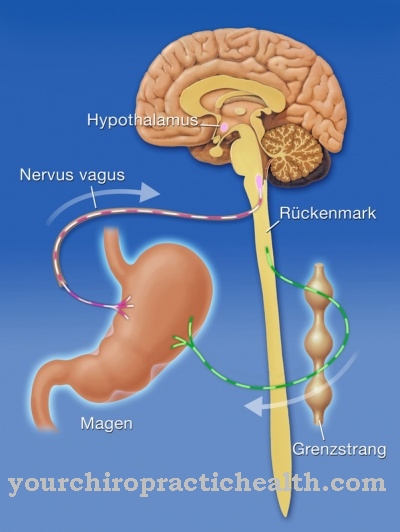The pathology deals with the assessment and determination of causes of pathological changes in the organism. She works closely with anatomy, pathophysiology and cytology. In medicine it is an important instrument for quality assurance.
What is the pathology?

The term pathology is derived from the Greek word "pathologia", which means something like illness, suffering or passion. In this sense, pathology is defined as disease science or disease research. It is a branch of medicine that deals with the symptoms and symptom complexes of pathological processes and their causes.
Furthermore, she investigates the origin, the origin and the effects of diseases. There are many examination options available to the pathology department. She examines both macroscopic and microscopic changes and therefore works closely with the anatomy, cytology and pathophysiology sub-areas.
However, it is to be distinguished from forensic medicine, which only deals with unnatural causes of death, but uses similar examination methods. Sometimes the terms are difficult to separate because the term "pathology" is also used in a figurative sense for a pathology department or institute.
Function, effect & goals
As already mentioned, pathology is actually concerned with the development, identification, course and effects of diseases. She makes use of various examination methods. Pathological diagnostics are based on the assessment of tissues through macroscopic and microscopic examinations.
The macroscopic assessment is about identifying pathological anatomical changes by visual inspection, which can provide an indication of certain pathological processes. For example, conspicuous color changes can be detected in tissue samples, which, in connection with other symptoms, indicate certain diseases. Microscopic examinations using light microscopy register deviations at the cellular level. This method can often be used to assess the malignancy of the cells to be examined. Pathology is also increasingly using biochemical and molecular biological methods for diagnostics.
Electron microscopy is also being used to an ever greater extent in pathological research. In addition to examining living tissue, the pathology department also carries out autopsies (examinations). The autopsies serve to determine the natural cause of death. The aim here is to find out which pathological processes have actually led to death. However, the examination of living tissue (biopsy) predominates in pathology by far. During the biopsy, tissue samples are taken by a doctor and examined by a pathologist. The pathologist processes small samples into slices and examines them with a light microscope. After the preparation, he first assesses large pieces of tissue macroscopically.
Unusual appearing tissue sections are cut out of the sample again and prepared for microscopy. Microscopy often gives the pathologist an indication of the type of pathological change and its severity. In this way, any cancer cells can be identified and the affected areas determined.If a tumor is present, its type, size, extent and malignancy can be assessed. Today, in addition to histological (microscopic tissue examination), immunological, biochemical and molecular biological tests are also carried out on the tissue. Examining the tumor at the molecular level can be crucial for choosing a particular form of therapy.
As already mentioned, a second important field of activity in pathology is the autopsy of corpses. An autopsy can only be carried out if the relatives of the deceased have given their consent. It serves to clarify the cause of death, can confirm the correctness of the treatment method to the doctor and reveals possible family risk factors such as genetic factors. It must be pointed out again that the pathologist only carries out the autopsy to clarify natural causes of death. If there is a suspicion of an unnatural cause of death such as an accident or murder, the coroner will deal with it.
The third task of pathology is quality assurance in order to maintain and constantly improve the medical standard. According to the type of pathological examination, the pathology is divided into four different sub-areas. Pathological anatomy, for example, deals with the investigation of pathological tissue changes through mere visual appearance. Histopathology, the most common examination method, comprises the histological assessment of tissue samples using microscopic and immunohistological methods.
In cytopathology, individual cells instead of tissues are examined for pathological changes. Finally, molecular pathology serves as the fourth sub-area of pathology for assessing individual cells and tissues at the molecular level.
You can find your medication here
➔ Medicines for painparticularities
Pathological changes are specific to all organic structures, so that every branch of medicine and even every form of organism has its own pathology. For example, the nervous system is referred to as neuropathology. Neuropathology is a branch of pathology that specifically deals with diseases of the nervous system and the brain.
In contrast to neurology, neurosurgery and psychiatry, it is a clinically theoretical subject that serves as the basis for diagnosis, therapy and prophylaxis of neurological diseases. Furthermore, due to the different pathology, human and veterinary medicine are separate medical areas.
The difficult delimitation of pathology from other medical specialties in common parlance is also expressed in the autopsy. Colloquially, an autopsy is always assigned to the pathology, regardless of the cause of death. In the case of unnatural deaths (murder, accident), however, forensic doctors are used to investigate. Only when natural causes of death can be determined are the autopsies always carried out by pathologists.













.jpg)

.jpg)
.jpg)











.jpg)